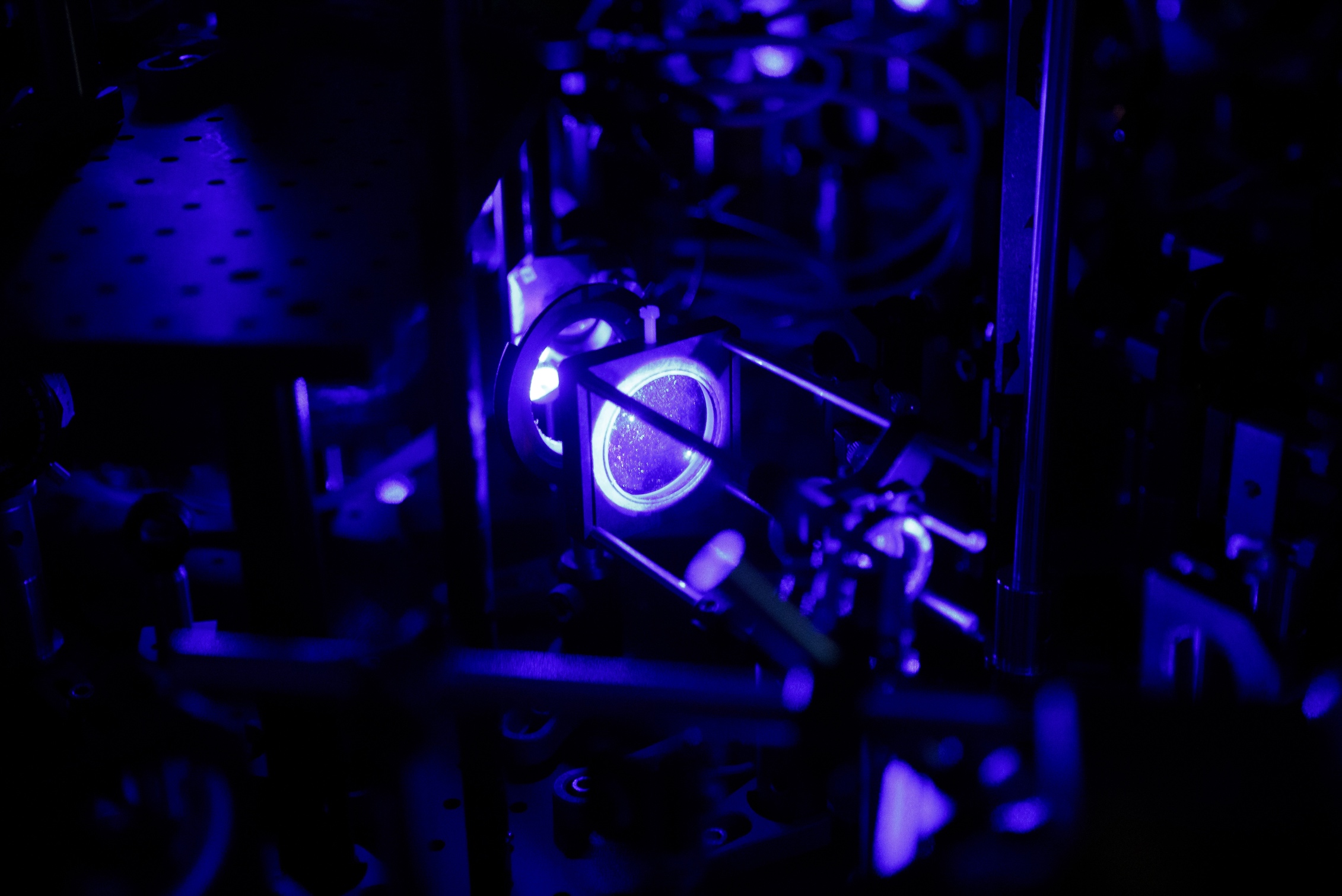Cooperative effects in light-atom interaction
Achieving Dicke superradiance in the optical domain and in vacuum is challenging because of the large required spatial atomic density. One releases this constraint, placing atoms in a high finesse cavity such that a bouncing photon can interact many times with the atomic ensemble. We noticed that the cavity was not necessary as far as the medium has a large optical density (OD), and is coherently excited by a laser [1]. We gave an original interpretation of the flash effect in this phenomenon. Then, we cast light on the richness of the flash effect, and the key role of the interference between the incident laser and the forward emission. Interference can enhance [superflash, see figure (a)] or suppress the flash [2], generate cooperative pulse emission [see figure (b)] [3], and lead to precise two-photon measurement in Λ-scheme [4]. We also used the flash effect to extract the elastic scattering component in a highly saturated medium [5], proposed a sensitive FM-spectroscopy method [6], and calculated the first-order correction due to near-field effects [7].


[1] M. Chalony, R. Pierrat, D. Delande, and D. Wilkowski, “Coherent flash of light emitted by a cold atomic cloud,” Phys. Rev. A, vol. 84, no. 1, p. 011401, Jul. 2011, doi: 10.1103/PhysRevA.84.011401.
[2] C. C. Kwong et al., “Cooperative Emission of a Coherent Superflash of Light,” Phys. Rev. Lett., vol. 113, no. 22, p. 223601, Nov. 2014, doi: 10.1103/PhysRevLett.113.223601.
[3] C. C. Kwong, T. Yang, D. Delande, R. Pierrat, and D. Wilkowski, “Cooperative Emission of a Pulse Train in an Optically Thick Scattering Medium,” Phys. Rev. Lett., vol. 115, no. 22, p. 223601, Nov. 2015, doi: 10.1103/PhysRevLett.115.223601.
[4] C. S. Madasu, C. C. Kwong, D. Wilkowski, and K. Pandey, “Homodyne detection of a two-photon resonance assisted by cooperative emission,” Phys. Rev. A, vol. 105, no. 1, p. 01313, Jan. 2022. doi: 10.1103/PhysRevA.105.013713
[5] C. C. Kwong, T. Wellens, K. Pandey, and D. Wilkowski, “Resonant forward-scattered field in the high-saturation regime: Elastic and inelastic contributions,” Phys. Rev. A, vol. 102, no. 6, p. 063722, Dec. 2020, doi: 10.1103/PhysRevA.102.063722.
[6] C. C. Kwong, E. A. Chan, S. A. Aljunid, R. Shakhmuratov, and D. Wilkowski, “Large optical depth frequency modulation spectroscopy,” Opt. Express, vol. 27, no. 22, p. 32323, Oct. 2019, doi: 10.1364/OE.27.032323.
[7] C. C. Kwong, D. Wilkowski, D. Delande, and R. Pierrat, “Coherent light propagation through cold atomic clouds beyond the independent scattering approximation,” Phys. Rev. A, vol. 99, no. 4, p. 043806, Apr. 2019, doi: 10.1103/PhysRevA.99.043806.

